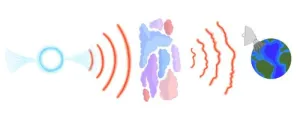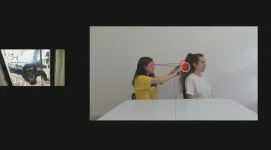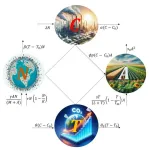(Press-News.org) A new study led by researchers at the University of North Carolina at Chapel Hill offers a solution to water scarcity during droughts amid the tug of economic development, population growth and climate uncertainty for water users in Western U.S. states. The proposed two-way leasing contracts would coordinate agricultural-to-urban leasing during periods of drought and urban-to-agricultural leasing during wet periods, benefiting both urban and agricultural water users.
“Water markets are an important tool for allocating water in the Western U.S., and other water-scarce regions around the world, but they are often slow to respond to drought, preventing re-allocation that can substantially reduce financial impacts,” says Greg Characklis, W.R. Kenan Distinguished Professor of environmental sciences and engineering at the UNC Gillings School of Global Public Health and director of UNC’s newly established Institute for Risk Management and Insurance Innovation (IRMII).
The study, recently published in Earth’s Future, considers the hydrologic, engineered and institutional systems that govern water along the fast-growing Front Range communities in Colorado, testing a two-way option contract for water users that can quickly respond to wet or dry conditions. These contracts are signed in advance of a drought and can provide both cost savings and high water supply reliability for cities, which can use them to quickly acquire water from irrigators during dry periods. This arrangement allows cities to forego developing large and expensive supplies that are rarely used. Agricultural users benefit from annual option payments from urban users, and higher fees in dry years when the water is transferred. In normal and wet years, these two-way option contracts result in excess urban supplies being transferred to irrigators who then benefit from higher levels of agricultural productivity in these years.
Historically, reallocating water via water rights leasing is slow and expensive, especially during drought. Municipalities often resort to purchasing many more permanent water rights than needed to meet average demand and ensure reliable supply even under the driest conditions. After purchasing these infrequently used rights, the slow and expensive leasing process deters cities from leasing surplus rights back to irrigators in normal or wet years, which reduces long-term agricultural productivity. States in the Western U.S. have begun passing laws to make the regulatory approval process for short-term water transfers quicker and less expensive, yet new mechanisms have not been established to take advantage of these new laws. This research suggests that innovative new contract structures may be part of the solution.
“Two-way option contracts can be multi-year, and by seeking approval and working out the details in advance of a drought, transfers between mutually agreeing parties can lead to rapid and efficient reallocation of scarce water in ways that significantly reduces losses,” says Zachary Hirsch, the lead author and former graduate student (MS ’23) in the Environmental Sciences and Engineering Department at the Gillings School of Global Public Health.
The study evaluated the efficacy of the model across a 63-year observed hydrologic record from 1950 to 2012 in the study region of Colorado and found it to be an efficient and cost-saving tool for both municipalities and irrigators to rapidly respond to the changing hydrologic conditions over time as compared to traditional water allocation practices.
“Decades of one-way, permanent water transfers have resulted in significant indirect impacts to agricultural economies and caused tension between urban and agricultural water users. Contracts that ensure transfers are reciprocal and responsive to changing conditions are key to restoring trust at a time when cooperative solutions to drought are desperately needed,” says H.B. Zeff, another contributing author and IRMII’s new director of research.
The research team says this two-way allocation model can be applied to other water markets across the U.S.
Read the full study here: https://agupubs.onlinelibrary.wiley.com/doi/full/10.1029/2024EF004434
END
Two-way water transfers can ensure reliability, save money for urban and agricultural users during drought in Western U.S., new study shows
2024-11-26
ELSE PRESS RELEASES FROM THIS DATE:
New issue of advances in dental research explores the role of women in dental, clinical, and translational research
2024-11-26
Alexandria, VA, USA - The Journal of Dental Research (JDR) has announced the publication of a new issue of Advances in Dental Research, a supplement to the Journal of Dental Research (JDR), entitled, "Women in Dental, Clinical, and Translational Research.”
The 2024 Annual Meeting of the American Association for Dental, Oral, and Craniofacial Research (AADOCR) and the Canadian Association for Dental Research featured a two-day “Meeting Within a Meeting” on the topic of “Women in Dental, Clinical, and Translational Research” organized by AADOCR Then- President Alexandre Vieira. During these sessions, speakers were challenged to reflect on ...
Team unlocks new insights on pulsar signals
2024-11-26
Team Unlocks New Insights on Pulsar Signals
November 26, 2024, Mountain View, CA – Dr. Sofia Sheikh from the SETI Institute led a study that sheds new light on how pulsar signals—the spinning remnants of massive stars—distort as they travel through space. This study, published in The Astrophysical Journal, was performed by a multi-year cohort of undergraduate researchers in the Penn State branch of the Pulsar Search Collaboratory student club. Maura McLaughlin, Chair, Eberly Distinguished Professor of Physics and Astronomy, West Virginia University, created the Pulsar Search Collaboratory to engage ...
Great apes visually track subject-object relationships like humans do
2024-11-26
Great apes track events with their eyes in the same way that humans do, according to a study published November 26th in the open-access journal PLOS Biology by Vanessa Wilson from the University of Neuchatel, Switzerland, and colleagues.
When watching a cat chase a mouse, humans will alternate looking at cat and mouse, using the information to connect the two into what’s called an agent-patient relationship—with the cat as the agent and the mouse as the patient. This cognitive mechanism is thought to be ...
Recovery of testing for heart disease risk factors post-COVID remains patchy
2024-11-26
Routine screening to detect risk factors for heart disease dropped sharply during the COVID-19 pandemic in England, and some key measurements, such as blood pressure readings, may still lag behind pre-pandemic levels. These findings are reported in a new study by Frederick Ho and Naveed Sattar of the University of Glasgow, Scotland, UK, and colleagues published November 26th in the open-access journal PLOS Medicine.
During the COVID-19 pandemic, patients went without routine face-to-face health checks, which are important for detecting common cardiometabolic ...
Final data and undiscovered images from NASA’s NEOWISE
2024-11-26
While NASA’s NEOWISE telescope ended its journey through space on Nov. 1, 2024, the team at IPAC, a science center at Caltech, was working on one further gift from the prolific mission.
The final data release from NEOWISE was released to the astronomy community just two weeks later, on Nov. 14, encompassing over 26 million images and nearly 200 billion sources detected by the telescope. And today, IPAC is releasing six new images from the mission’s archival data as a tribute to this landmark project, available here: https://www.astropix.org/link/3b2x
NEOWISE ...
Nucleoporin93: A silent protector in vascular health
2024-11-26
"Research in the last several decades has established endothelial cells (ECs) as a dynamic interface critical for vascular protection.”
BUFFALO, NY- November 26, 2024 – This editorial was published by Aging (listed by MEDLINE/PubMed as "Aging (Albany NY)" and "Aging-US" by Web of Science) in Volume 16, Issue 17, titled, “The silent protector: Nucleoporin93’s role in vascular health.”
Written by Julia Michalkiewicz, Tung D. Nguyen, and Monica Y. Lee from The University of Illinois at Chicago College of Medicine, ...
Can we avert the looming food crisis of climate change?
2024-11-26
WASHINGTON, Nov. 26, 2024 – Human activities are causing atmospheric carbon dioxide (CO2) levels to rise, which increases the global average surface temperature—and poses a threat to crop growth. Escalating concerns about climate change’s impact on global food security inspired researchers from Banaras Hindu University in India to create a way to explore how these factors influence crop yields.
In Chaos, from AIP Publishing, the researchers share a mathematical model created to capture the nonlinear relationships between CO2, temperature, human population, ...
Alcohol use and antiobesity medication treatment
2024-11-26
About The Study: This cohort study among individuals participating in a weight loss program found that nearly half of those consuming alcohol at baseline decreased their alcohol use after anti-obesity medication initiation. There may be properties of anti-obesity medications that lead to reduced use. For example, naltrexone decreases cravings for alcohol and glucagon-like peptide-1 receptor agonists (GLP-1 RAs) may attenuate the rewarding effects of alcohol, similar to food.
Corresponding Author: To contact the corresponding author, Lisa R. Miller-Matero, PhD, email lmatero1@hfhs.org.
To access the embargoed study: Visit our For The Media website at ...
Study reveals cause of common cancer immunotherapy side effect
2024-11-26
A multinational collaboration co-led by the Garvan Institute of Medical Research has uncovered a potential explanation for why some cancer patients receiving a type of immunotherapy called checkpoint inhibitors experience increased susceptibility to common infections.
The findings, published in the journal Immunity, provide new insights into immune responses and reveal a potential approach to preventing the common cancer therapy side effect.
“Immune checkpoint inhibitor therapies have revolutionised cancer treatment ...
New era in amphibian biology
2024-11-26
Amphibians hold a significant place in evolution, representing the transition from aquatic to terrestrial lifestyles. They are crucial for understanding the brain and spinal cord of tetrapods—animals with four limbs, including humans. A group of scientists led by a team at the Institute of Science and Technology Austria (ISTA) now shows how harmless viruses can be used to illuminate the development of the frog nervous system. The results have now been published in Developmental Cell.
Virus. When you hear the word, you probably shudder. But not all viruses are bad or cause disease. Some are even used for therapeutic ...







